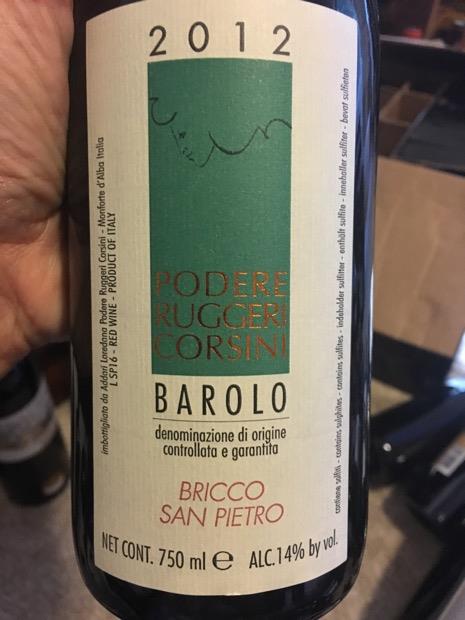
External search
Google (images)
Wine Advocate
Wine Spectator
Burghound
Wine-Searcher
Vintages
2020
2019
2018
2017
2016
2015
2013
2012
2011
2010
2009
2008
2007
2006
2005
2004
2003
2002
2001
From this producer
Show all wines
All tasting notes
|
| Drinking Windows and Values |
| Drinking window: Drink between 2020 and 2029 (based on 30 user opinions) |
| Community Tasting History |
| Community Tasting Notes (average 91.5 pts. and median of 91 pts. in 2 notes) - hiding notes with no text | | | Tasted by dlowrey99 on 2/18/2024 & rated 92 points: Fresh and bright red fruit on the nose/palate upon opening; decanted for 45 minutes. Nice tannic structure with a complex bouquet of flavors. Paired with tangy braised beef short ribs - balanced the fat and enhanced the herbs and spices in the dish. Though, the food was still a bit too rich and hid the wine. Enjoyed the wine much more on it's own. (78 views) | | | Tasted by mtgu on 1/8/2023 & rated 91 points: Light / elegant entry level barolo from Corsini. Loads of red berries , smoke, tar leather and the super nice licorice finish. 2012 drunk 2023, probably over a little past peak. Quaffable and the bottle disappeared pretty quick :-) (139 views) |
| Podere Ruggeri Corsini Producer websiteNebbioloNebbiolo is a red grape indigenous to the Piedmont region of Italy in the Northwest. The grape can also be found in other parts of the world, though they are not as respected.
Nebbiolo is often considered the "king of red wines," as it is the grape of the famed wines of Barolo DOCG, Barbaresco DOCG, and Roero DOCG. It is known for high tannins and acidity, but with a distinct finesse. When grown on clay, Nebbiolo can be very powerful, tannic, and require long aging periods to reach its full potential. When grown on sand, the grape exhibits a more approachable body with more elegant fruit and less tannins, but still has high aging potential.
"Nebbiolo" is named for the Italian word, "nebbia", which means "fog", in Italian and rightfully so since there is generally a lot of fog in the foothills of Piedmont during harvest.
Nebbiolo is a late-ripening variety that does best in a continental climate that boasts moderate summers and long autumns. In Piedmont, Nebbiolo is normally harvested in October.
More links:
Varietal character (Appellation America) | Nebbiolo on CellarTrackerBricco San PietroBricco San Pietro is a 380 ha. vineyard (cru)/ 40 ha. Barolo MGA in the Monforte d’Alba municipality. Italy Italian Wines (ItalianMade.com, The Italian Trade Commission) | Italian Wine Guide on the WineDoctorPiedmont Vignaioli Piemontesi (Italian only)
On weinlagen-infoLanghe Consorzio di Tutela Barolo Barbaresco Alba Langhe e Roero | Union of Producers of Albese Wines (Albeisa)BaroloRegional History:
The wines of Piedmont are noted as far back as Pliny's Natural History. Due to geographic and political isolation, Piedmont was without a natural port for most of its history, which made exportation treacherous and expensive. This left the Piedmontese with little incentive to expand production. Sixteenth-century records show a mere 14% of the Bassa Langa under vine -- most of that low-lying and farmed polyculturally. In the nineteenth century the Marchesa Falletti, a frenchwoman by birth, brought eonologist Louis Oudart from Champagne to create the first dry wines in Piemonte. Along with work in experimental vineyards at Castello Grinzane conducted by Camilo Cavour -- later Conte di Cavour, leader of the Risorgimento and first Prime Minister of Italy -- this was the birth of modern wine in the Piedmont. At the heart of the region and her reputation are Alba and the Langhe Hills. This series of weathered outcroppings south of the Tanaro River is of maritime origin and composed mainly of limestone, sand and clay, known as terra bianca. In these soils -located mainly around the towns of Barolo and Barbaresco -- the ancient allobrogica, now Nebbiolo, achieves its renowned fineness and power.
map of Barolo DOCG
An interesting thread on Traditional vs. Modern Barolo producers:
https://www.wineberserkers.com/forum/viewtopic.php?f=1&t=106291 |
|




